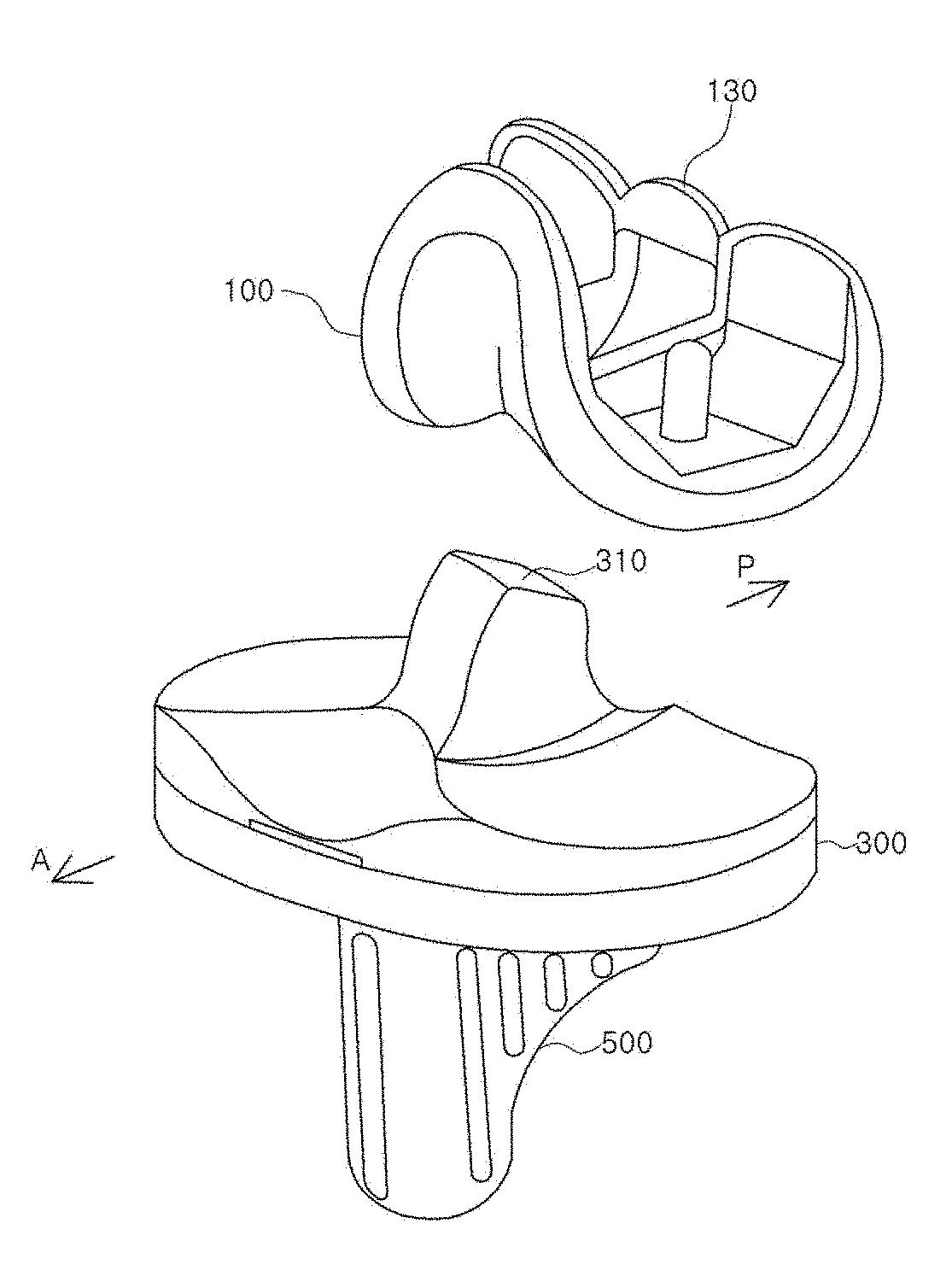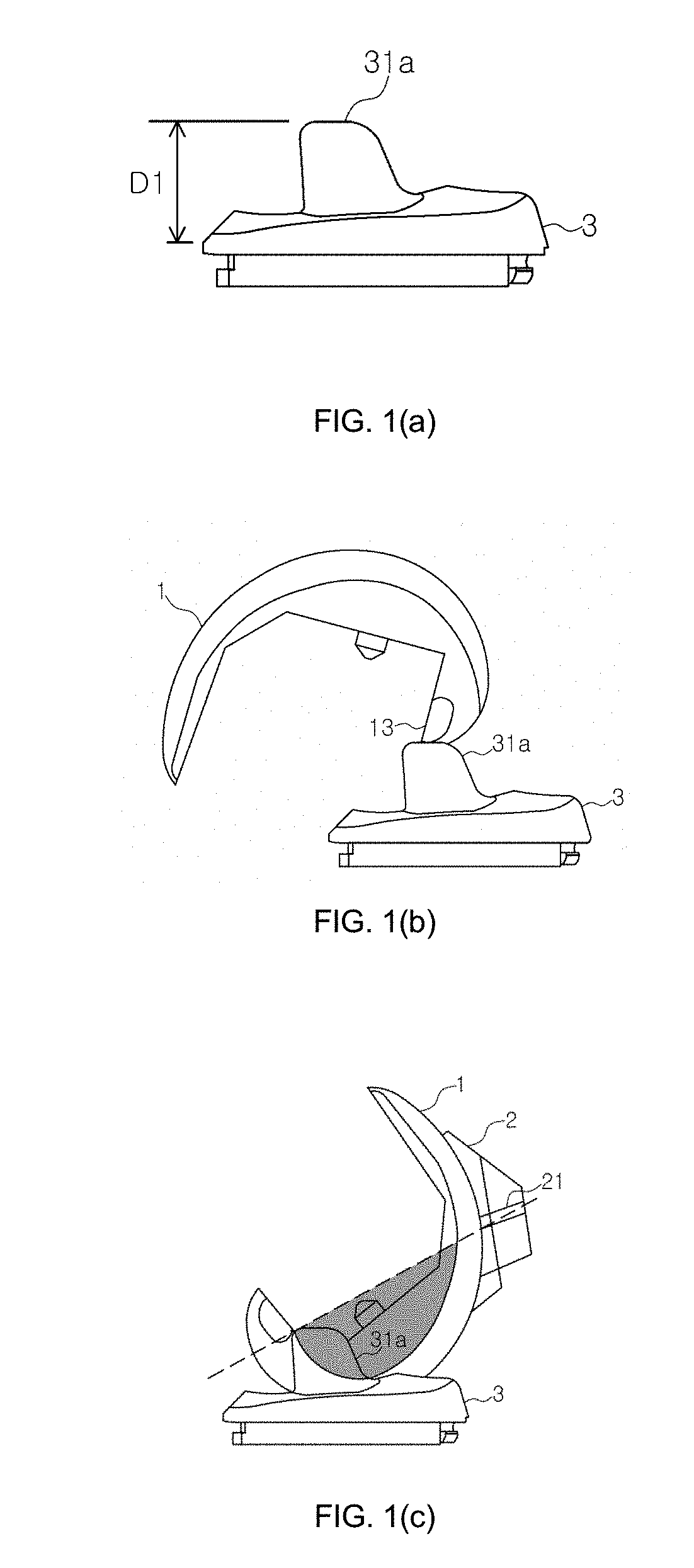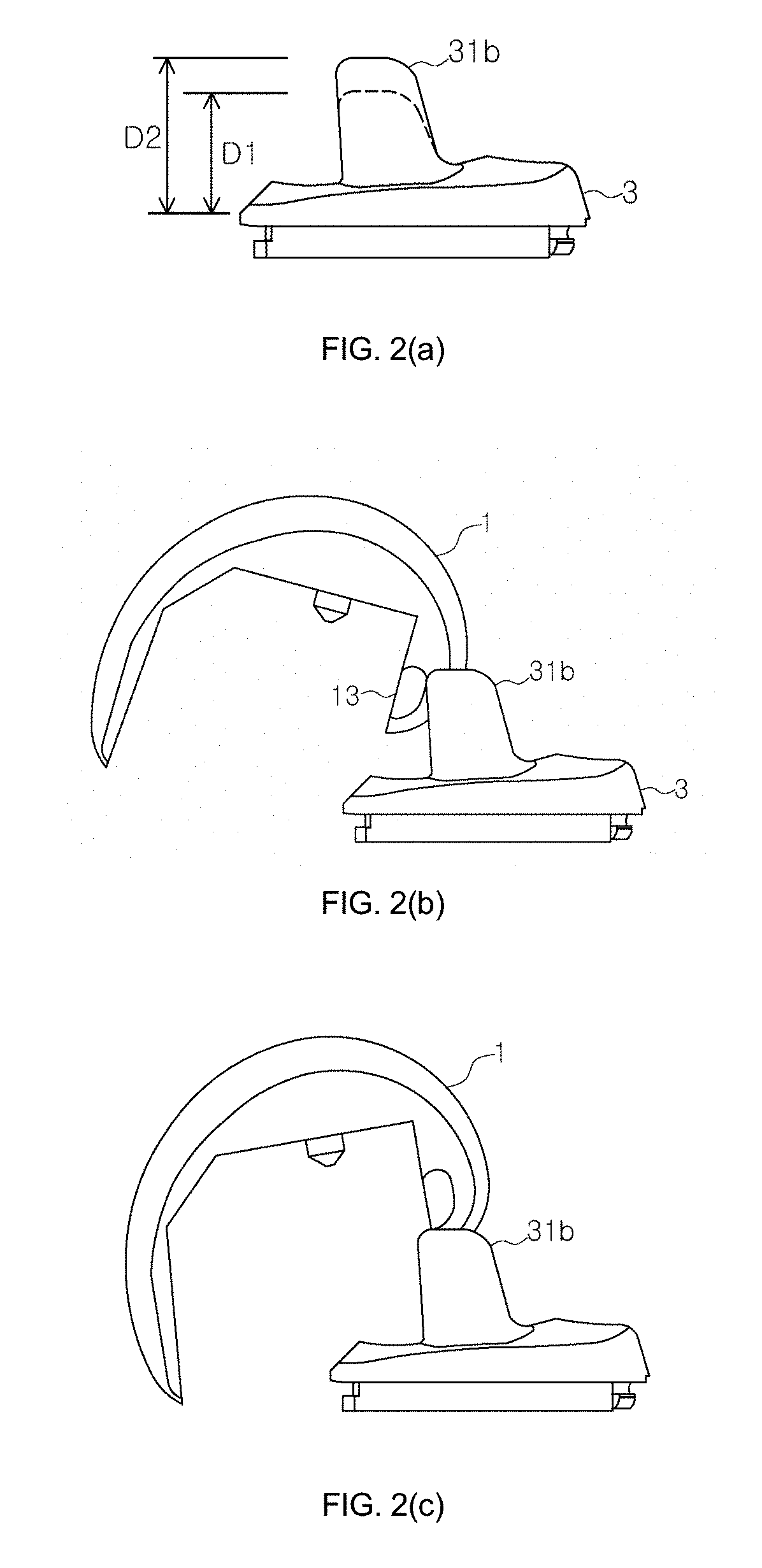Artificial knee joint capable of preventing dislocation of thighbone coupling member
- Summary
- Abstract
- Description
- Claims
- Application Information
AI Technical Summary
Benefits of technology
Problems solved by technology
Method used
Image
Examples
Example
BEST MODE
[0060]Hereinafter, an artificial knee joint capable of preventing dislocation of a thighbone coupling member according to the present invention will be described in detail with reference to the accompanying drawings. Unless otherwise defined, all technical terms used herein have the same meaning as commonly understood by one of ordinary skill in the art to which this invention belongs, but if the meaning of the terms used herein is not consistent with the meaning commonly used, it will be interpreted according to the definition used in the specification. Further, in the following description of the invention, if the related known functions or specific instructions on configuring the gist of the present invention unnecessarily obscure the gist of the invention, the detailed description thereof will be omitted.
[0061]Throughout the specification, when a unit is referred to as “comprising” or “including” at least one component, it does not exclude other components unless stated...
PUM
 Login to View More
Login to View More Abstract
Description
Claims
Application Information
 Login to View More
Login to View More - R&D
- Intellectual Property
- Life Sciences
- Materials
- Tech Scout
- Unparalleled Data Quality
- Higher Quality Content
- 60% Fewer Hallucinations
Browse by: Latest US Patents, China's latest patents, Technical Efficacy Thesaurus, Application Domain, Technology Topic, Popular Technical Reports.
© 2025 PatSnap. All rights reserved.Legal|Privacy policy|Modern Slavery Act Transparency Statement|Sitemap|About US| Contact US: help@patsnap.com



